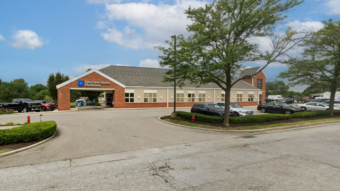The engine of the commercial real estate industry is people, which can often make it feel like a close-knit family. Likewise, the LGBTQ community is also very nurturing of its members. So, what are the experiences of those who fall within both groups?
Insightful Chicago—which has as its mission to creates inspiring stories and conversations for women, minorities, and the LGBTQ community in the CRE industry—hosted a discussion that focused on being LGBTQ in the design industry. The panel series was hosted by the organization’s cofounders, Derek Jayson Rusch, Catie Kill and Tyler Offutt. The panelists met digitally via Zoom, sponsored by Herman Miller.
The panelists were cognizant of the fact that working in the architecture and design industry—and doing so now at this point in history—affords them some level of ease, at least in comparison to other industries or even other disciplines within commercial real estate.
“When I became part of the design community, it was like, ‘where has this world been all my life?’ There is a vibrance about this community,” said Todd Heiser, co-managing director of Gensler in Chicago. “Designers are a collection of misfits. I once was an outsider, but this community really brought everything together for me.”
Mel Chotiner, senior interior designer at Wright Heerema Architects in Chicago, described a similar experience. One of her first jobs was with Perkins & Will and she relished the opportunity to pick the brains of the senior designers on architectural issues, personal issues and everything in between.
“As an industry, we’re fortunate to be in a place where we are less of an outsider,” Chotiner said. “I’ve experienced more discrimination outside of the workplace than in it.”
While the architecture and design community may be more inclusive than other professions, clients and potential clients come from all walks of life. Roger Sekol interior design practice leader in the Houston office of Perkins + Will, said that he has had to carefully manage how he comes across with some of these individuals so as not to strain a professional relationship.
“Whether you are in Chicago, Houston or central Ohio, whoever the client is, I try to adjust myself based on who I’m working with,” Sekol said. “It’s a lot like clothing. You might dress differently for a tech client, for instance.”
“I’ve never had to deal with conversations about people’s sexuality in this industry, whether people know I’m gay or not,” said Malisa Bryant, senior vice president and general manager at Herman Miller. “By nature of being a black woman and six feet tall I always feel like I stand out anyway.”
As a woman, a person of color and a member of the LGBTQ community, Bryant said she has found herself overcompensating and at times restraining what she says so as not to cause offense among clients or industry colleagues—who are quite often white cis males. Her view now, however, is that the world had better catch up with her, not the other way around.
“As I get older,” Bryant said, “I think, ‘the hell with it. I’m going to speak how I want to speak.”
Neil Schneider, design director and principal at IA Chicago, said that inclusion needs to be better incorporated not just in the industry, but also in the buildings and spaces that they are designing. That includes subtle pushback on clients’ wants and needs, to help redefine what is “normal” in the built space.
“The way that we design environments, they have to have an inclusive nature to them,” Schneider said. “There needs to be more dialog about restrooms, wellness centers and making space for every generation, every sexual orientation, every background.”
Alex Gray, an architect in New York with Mace Group North America, had one suggestion to help push these boundaries. “A great way to convince people to do stuff is explaining how it will make them money,” he said.
As an example, Gray described how New York now requires that all single-occupancy bathrooms within public and commercial properties be designated as gender neutral, rather than male or female. He has used this as leverage with clients in other parts of the country, saying that if they incorporate the change now, they won’t have to pay to make changes later if their jurisdiction were to pass a similar ordinance.
Other topics that came up included pronouns; straight colleagues who consider themselves allies of the LGBTQ community can do something as simple as include their pronouns in their email signature as a way to shift the burden away from transgender individuals.
In addition to discussing their personal mentors, the panelists also acknowledged the members of the LGBTQ community who came before and help to tear down barriers that might otherwise have stood in their way. All agreed that we’ve come a long way, but there are still challenges ahead.




